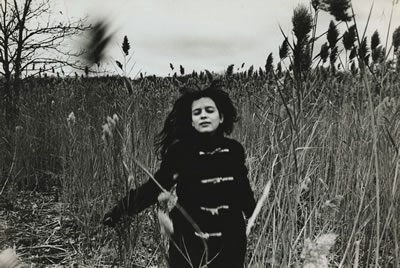Photographer’s Images Reach Out Across Half a Century
Abstract
A dive into the archives of Psychiatric News finds that a picture can replace a plethora of words. This article is part of a series marking the 50th anniversary of Psychiatric News.
A group of children pulling sleds in the snow. A teenage boy standing alone as ghostly, blurred figures pass in the background. A girl running through tall grass. Another in sunglasses on a rainy day. Children exploring a beach, backlit by a sparking sea. A girl leaning against a white marble sculpture of a mother and child. Is she sad or comforted? The ambiguity only adds to the allure of the photograph.

The series of evocative images appeared in 1966 and 1967 in Psychiatric News in advertisements for New York’s Psychiatric Treatment Center for Adolescents. Each included a single, black-and-white photograph with—unusual for an advertisement—a credit line for the photographer: Arthur Leipzig.
Leipzig, a native New Yorker who lived from 1918 to 2014, had dropped out of high school and was working in his uncle’s glass factory when someone suggested that he visit the Photo League, a photography collective that also taught the craft and art of image making. The Photo League was an incubator for many documentary photographers in the 1930s, 1940s, and 1950s, today seen as a golden age of the genre.
“That changed his life,” his widow, Mimi Leipzig, told Psychiatric News. “He said, ‘When I walked in there, I knew that’s what I was going to do.’”
Leipzig eventually got a job on the socially conscious newspaper PM, famous for using photography generously and for allowing its photographers great creative leeway in their choice of subjects. He later worked for International News Service before becoming a freelancer. For three decades, he taught generations of photography students at Long Island University.

For more photos, click here.
Some of Leipzig’s most enduring photos are of young people at play on the streets of New York, images that preserve a memory of a now-bygone city. In 1996, the Museum of the City of New York mounted a solo exhibition of his work focusing on that age group called “Growing Up in New York.”
None of the young people in the ads were patients. Leipzig occasionally used his children and their friends as models in his photographs, some of which were used in the ads for the Psychiatric Treatment Center, said Mimi Leipzig. “Our daughter was a very good actress.”
The Psychiatric Treatment Center was an inpatient facility on East 80th Street, founded in the 1960s by three psychiatrists: Julian Barish, M.D., George Naumberg, M.D., and Bruce Buchenholz, M.D. It closed in the 1980s, and the building is now a home for people with dementia.
The center’s treatment model was called Program Therapy, recalled Gretchen Buchenholz, M.A., the widow of Bruce Buchenholz, in an interview.
“Because teens were not so good at talk therapy, the idea was to have therapists engage them in sports and hobbies they enjoyed,” she said. The teens could choose from activities like woodworking, horseback riding, bowling, sailing, skating, bicycling, sewing, painting, boxing, weightlifting, and others.
The therapists would use the activity to reinforce the psychiatrists’ treatment plan, said Gretchen Buchenholz. “The children’s activity became a kind of metaphor for what they were struggling with internally.”
The psychiatrists and the photographer became close.
“Arthur was creative, artistic, sensitive, and kind,” Buchenholz said. “He understood human beings and was able to express that in his art.” ■
A selection of Arthur Leipzig’s photographs is posted on the website of the Howard Greenberg Gallery. “Program Therapy for Inarticulate Adolescents” by Joseph Zacker, M.A., and Bruce Buchenholz, M.D., appeared in Psychiatric Services in September 1967.



